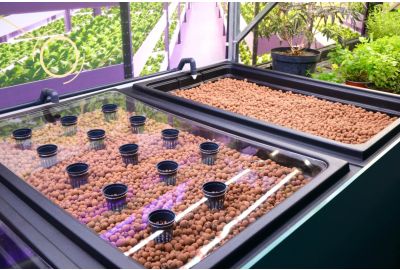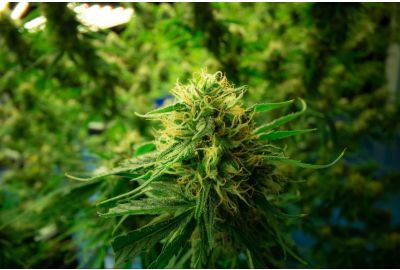A Comprehensive Guide On Hydroponic Weed
Hydroponic weed farming is slowly taking shape and changing the face of cultivation worldwide. Growers can maximize the potential of the crops once they set up a hydro system.
Hydro weed is a great choice if you can afford the equipment required and necessary attention to propagate quality crops. You’ll love growing cannabis in hydro as much as the finished product. It's like swapping a bike for a Maserati. Buckle up if you wish to join in on the action as we look at:
- What is hydroponic weed?
- Creating the right environment from proper lighting, temperature, nutrients, and water
- Common systems and how they work
- Pros and cons for each setup
- Feature some of the best marijuana strains for hydro
- Tips on cultivation
Let’s roll.
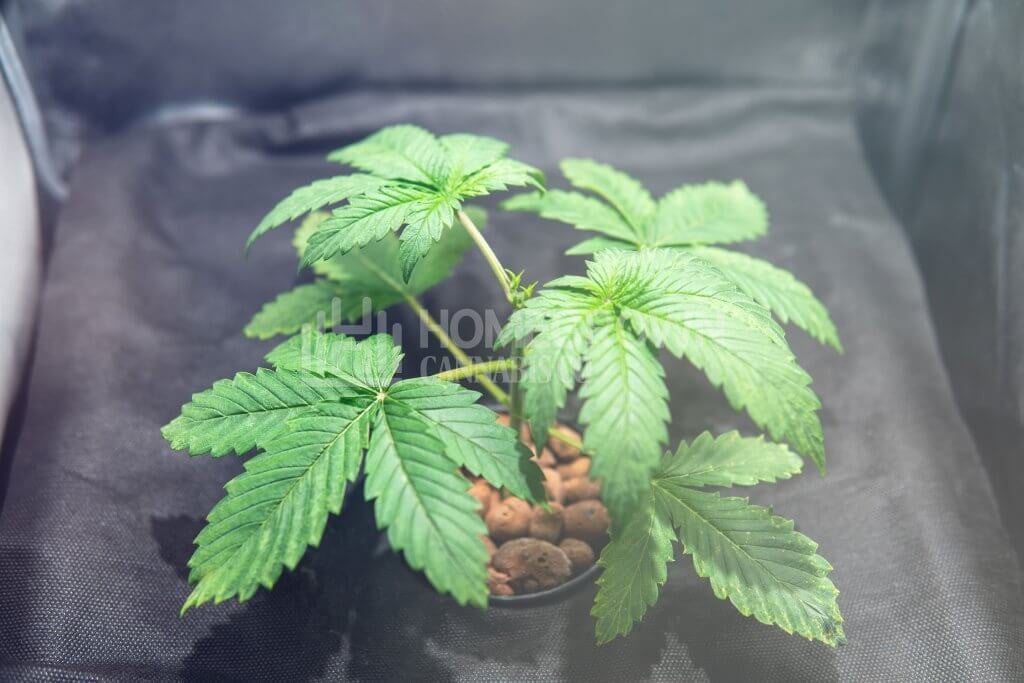
What is hydroponic weed?
Hydroponics for weed is simply farming cannabis without the use of soil. All you need for plants to thrive is water, warmth, and air. Hydroponic cultivation has been in existence for thousands of years, even though many people regard it as a new concept.
One of the earliest records of hydro traces back to the famous hanging gardens of Babylon in 600 BC. Cultivators installed a chain system that pulled water from the Euphrates River and trickled it down into the grounds.
The floating gardens of China recorded by Marco Polo in the 13th century is another example of early hydroponics. Rafts made out of reeds and topped off with a bit of soil floated out to the water. Aztecs also used hydro techniques in the 10th and 11th centuries.
Weed hydroponics is nowadays the go-to method for commercial cultivators and city dwellers worldwide. Microorganisms in soil break down organic compounds to provide nutrients to the plant. Hydroponic mediums are inert, meaning they do not participate in any growing activities. Add fertilizer that’s required to water during each feeding.
Hydroponic weed vs. soil
Deciding between hydroponic weed vs. soil is a case of convenience and personal preference. Here are the advantages and disadvantages of a hydro setup.
Pros
- Cultivars in a hydroponic weed setup have a higher growth rate because the roots don’t spend energy searching for nutrients.
- Faster growth leads to shorter farming cycles, meaning more return and increased output.
- Cultivate in a smaller space.
- Total control of the growing process for healthier plants, consistent results, and scaling up operations.
- Hydroponic grow systems for weed are less prone to bug and pest infestation.
- Clean, since you don't get dirty, unlike when handling soil.
- There is no need for crop rotation due to infertile soil.
- Groundwater is less likely to be contaminated.
- Less demand for fresh water. Saves up to 80%. Ideal for commercial cultivators in water-scarce regions.
- Propagate out of season in a controlled environment.
Cons
- Higher initial costs.
- Hydroponics marijuana cultivation is less forgiving than soil. It is important to correct any pH problems as soon as possible and closely monitor the nutrient levels.
- Brings a potential risk of harder to deal with water-borne plant diseases.
- Requires knowledge and patience
- Roots are susceptible to damage if there’s a pump failure or you run out of water.
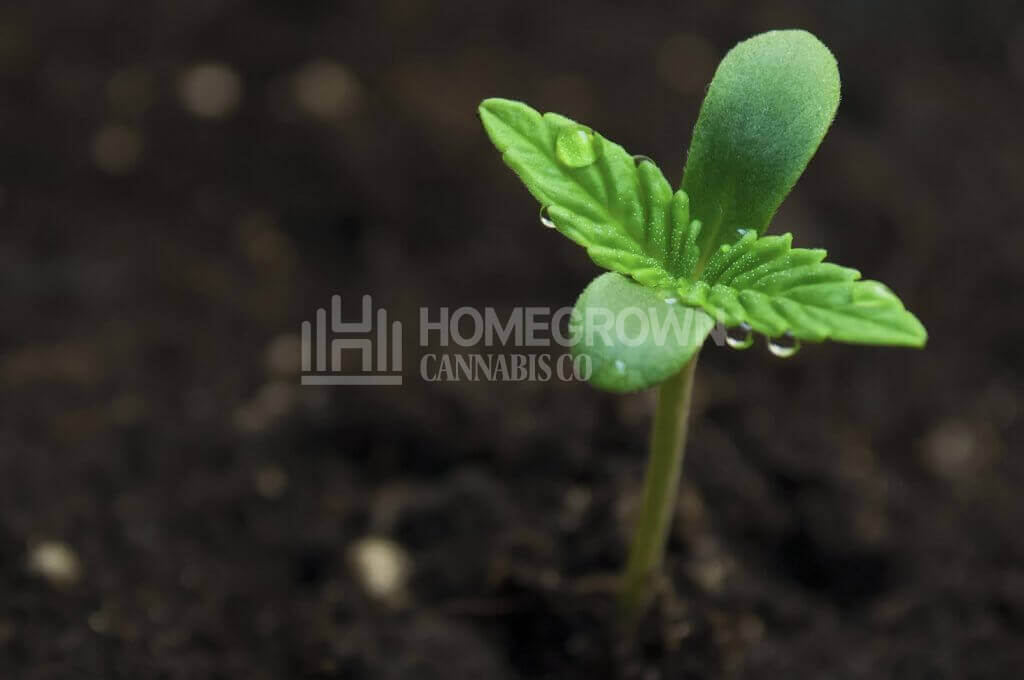
Is hydroponic weed stronger?
This debate has run for decades. Even though most people believe hydro weed buds are more potent, no scientific analysis supports this. A study conducted in 2013 didn't find significant differences in THC levels of 26 samples of crops seized in Australia by NSW police across the state.
Master grower Kyle Kushman recommends cultivating marijuana in soil to give buds a unique terpene profile for a more complex flavor. Many cannabis connoisseurs say hydroponic buds have a strong, chemical-like smell and taste if the plants are not flushed close to harvesting.
A study conducted by D.R. Hoagland and D.I. Aron in 1950 shows that hydro doesn't produce higher yields than soil. However, expect to harvest hydroponic weed buds faster since plants absorb food more quickly, and roots have easier access to oxygen.
What do you need for a hydroponic system for weed?
Setting up a hydroponic system for weed may initially appear expensive, but the subsequent costs are manageable. Hydro farming is best left to experienced cultivators because plants won’t do well if a mistake happens.
Here’s how to create the right nutrient solutions and environment for hydroponics cannabis to thrive.
Different mediums for hydro weed
Cultivate hydroponic weed in many setups since all you need is a nutrient-laden solution, warmth, and air.
Examples of alternative inert growing mediums include; coco peat, pumice (volcanic rock), clay pebbles, sand, gravel, Rockwool, perlite, granite, ballast, or brick shards. A DWC hydroponic weed grow system has water as its primary medium.
Treated and stabilized coconut husks chips make coco peat/coir. This common hydroponic medium retains water suitably and resists fungal growth.
Rockwool is another popular medium because it holds water and air well enough. However, it may require some balancing because it could have high pH content.
Clay has tiny holes that hold nutrients and air, but roots of hydroponic weed growing in it often become tangled by harvest time. Recycle this material after sterilization by soaking it in water and hydrogen peroxide.
Perlite comes from volcanic glass or sand, so it doesn't hold onto air or nutrients sufficiently. Growers mix vermiculite and perlite to increase water retention. Construction-grade vermiculite, however, could contain toxins.
Check out our hydroponic growing medium page for more details.
What hydro nutrients should you use for cannabis?
Plants need suitable nutrients, so you have to apply the right solution when required. Plants grow healthier and faster in hydro because you give them what’s required.
Formulate nutrient solutions for hydroponic cannabis using chemicals or buy them pre-mixed. Excess nutrients could overwhelm and damage the plant due to lockouts, while too little stunts growth.
Water for a marijuana hydroponic system needs to have macro and micronutrients. The main macronutrients are nitrogen (N), phosphorus (P), and potassium (K), usually denoted as NPK in fertilizer solutions, with varying ratios.
Non-distilled tap water has the majority, if not all, of the micronutrients required in minute quantities. Plants need nitrogen in higher concentrations for vegetative growth, whereas phosphorus and potassium are necessary for blooming.
Nutrient mixes come with a feed chart to guide you on the concentrations required. Check out our hydroponic grow schedule for more on this. Optimal NPK ratios at different life cycles of hydroponic weed cultivars are as follows:
| Growth stage | N | P | K |
| Seedling | 2 | 1 | 2 |
| Early veg | 4 | 2 | 3 |
| Advanced vegetative | 10 | 5 | 7 |
| Veg to flowering transition | 7 | 7 | 7 |
| Early flowering | 5 | 10 | 7 |
| Full Flowering | 6 | 15 | 10 |
| Final flowering | 4 | 10 | 7 |
Always start with pure water and work your way up. Replace your nutrient solution if you notice your plants starting to yellow or brown and get crispy because they might have a low mineral content.
Use an EC or TDS meter to determine the concentration of nutrients in your reservoir. TDS stands for total dissolved solids indicated in parts per million (PPM), while EC means electrical conductivity.
The ideal PPM range for each phase of the hydroponic marijuana plants' life cycle is as follows:
| Stage | PPM |
| seedling | 100–250 |
| clones/ early veg | 500–600 |
| Late veg | 800–900 |
| flowering | 1000–1100 |
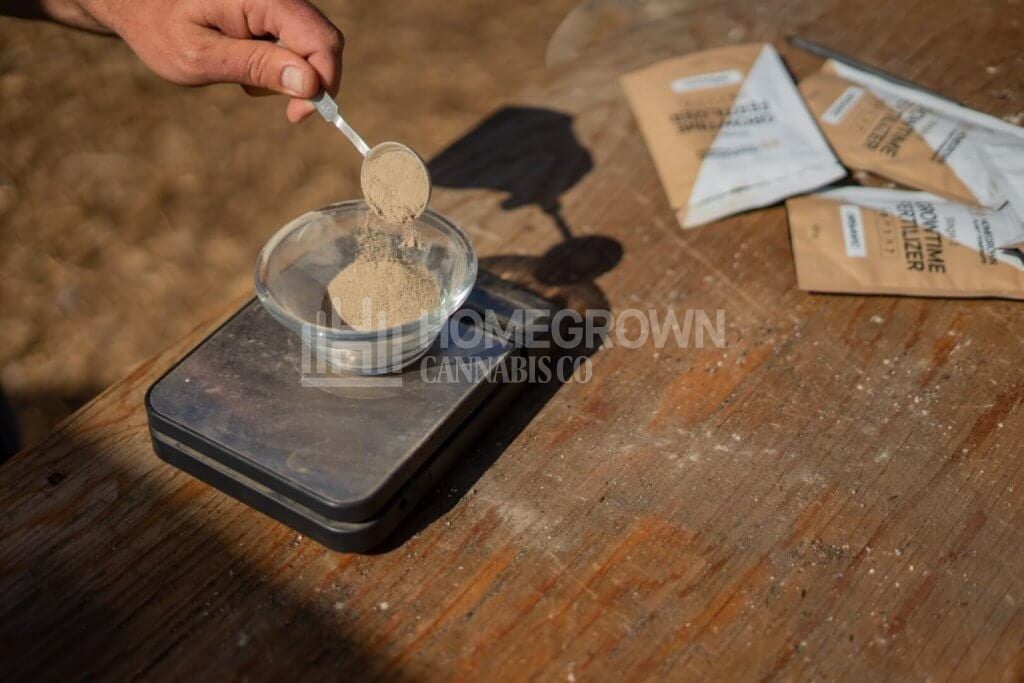
Can you use any water for hydroponic marijuana?
No, you can't because the water for hydroponic cannabis needs to have an ideal temperature, pH, and PPM levels.
Pure water is always the best base to start with, and then add nutrients as needed in the right balance and concentration. Distilled or stormwater usually has a neutral pH and a low PPM—ideal for starting weed hydroponics. Minerals, chemicals, and impurities change nutrient levels and pH.
Tap water found in urban cities often contains chlorine to kill bacteria, but this chemical is detrimental to plants. Let it dissipate by exposing the water in your reservoir for a day or two. Accelerate this process by using air stones.
Many rural regions have hard water from wells because it contains heavy minerals like calcium. Purify it using carbon-based or reverse osmosis filters to remove all the excess minerals and impurities.
You should not recycle the nutrient solution in a weed hydroponics reservoir for more than two weeks. Add beneficial additives like hydro guard into the reservoir to fight off bacteria that cause root rot.
Keep a sterile environment when growing weed in a hydroponic setup. Wipe your equipment with alcohol, hot water, and peroxide before getting started. Wear sterile shoes and clothes to avoid contaminating your grow room.
What is the optimal hydro weed pH range?
pH is a measurement from 0 to 14 that shows whether a solution is acidic or basic, respectively. pH for cannabis determines how well your cultivar absorbs nutrients.
Marijuana plants absorb required nutrients in a slightly acidic environment. Optimal water pH in a hydroponic weed setup is between 5.5 to 6.5, while soil ranges from 6.0 to 7.0.
Stay on top of pH daily because it's often a problem if you have enough fertilizer in water, yet your plant looks deficient of a particular nutrient.
It’s better to get a litmus paper than a cheap digital pH meter that gives wrong results in pH tests. Cultivators normally use “pH up” and “pH down” to correct pH as required. Adjust pH after adding nutrient solutions, not before.
How do you provide oxygen to hydroponic cannabis roots?
Plants take in carbon dioxide (CO2) through their leaves and oxygen (O2) via their roots.
Each hydroponic weed system has a way of providing oxygen to the cannabis roots. For example, a deep water culture setup administers the gas to a nutrient solution using air stones inside the reservoir. Most of the oxygen dissolves in water due to bubbles that create ripples.
Dissolved oxygen (DO) prevents the growth of anaerobic bacteria that cause root rot for plants or diarrhea, nausea, cramps, or headaches for humans. A high concentration of DO promotes rapid root growth, enhancing the plant's ability to absorb nutrients.
A flood and drain hydro weed system has a wet to dry cycle, allowing the roots to breathe most of the time. Ensure the water in your reservoir stays within the 64 to 72 ℉ range to hold dissolved oxygen better.
What kind of grow lights should you use?
Artificial lighting is necessary if cultivating plants indoors. Marijuana needs enough of the right spectrum for each growth stage. Blue light for veg and red for flowering.
Expect to harvest around 0.5 to 1 gram per watt. For example, a 600w HPS lamp should produce 10 to 21 ounces of bud. Hydroponic weed plants grow fast, so keep an eye on the heat coming from your apparatus to avoid potential light burn.
Apply a hand test above the canopy when in doubt and observe if it starts to heat up. Move your lights further away if the temperature is too high.
HID (MH + HPS) is usually too powerful for newly sprouted seedlings, so it's best to use a CFL or an LED light with a dimmer at this stage.
Metal halide (MH) gives off a blue spectrum that promotes the growth of stems and leaves during the vegetative period. High-pressure sodium (HPS) bulbs emit a yellowish glow, ideal for flowering hydroponic cannabis plants.
LED grow lights are the choice option for the modern marijuana cultivator. They run cooler than HID lamps, are easy to install, and some provide the full spectrum of colors needed during the vegetative and flowering phases.
Here’s a comprehensive guide on choosing the best grow lights for indoor plants.

At what temperature range does cannabis thrive?
Many cultivators have a challenge maintaining the right water and room temperature for growing weed.
Hydroponic weed plants thrive in an environment that's between 73 and 80℉. A climate cooler than 60℉ slows growth and could even shock your plants resulting in zero yields. Frosty conditions also lead to too much moisture/humidity in your grow room, encouraging mold to flourish.
Extremely high temperatures stunts growth, producing loose or airy weed buds that are not as potent or aromatic as you’d like. Some pests like spider mites thrive if temperatures are above 80 ℉. Invest in thermometers and place them strategically to ensure the grow room doesn't have hot or cold spots.
Remember to keep the water in your reservoir at around 68℉ for better oxygen retention. Buy a water thermometer to track this.
What is the best humidity level for marijuana in hydro?
The relative humidity (RH) of your hydroponic weed grow room should be around 60% when starting. Seedlings primarily rely on moisture from the air to survive since they don't have sufficient roots. Most cultivators place a dome on top of their seedlings to maintain dampness.
Work the RH down from 60 to around 50 when flowering and 40 by harvest time. Here are the recommended cannabis humidity levels across the plants' life cycle:
| Stage | Humidity level |
| clone / seedling | 70% |
| vegetative | 40–60% |
| flowering | 40–50% |
| final two weeks | 40–45% |
Lowering humidity as your plants get bigger encourages stronger root growth and reduces the chances of bud rot from mold and mildew. Gradually drop the RH by 5% per week to avoid stressing your hydroponic cannabis plant.
Measure moisture levels using a hydrometer. Invest in a humidifier and dehumidifier to maintain ideal humidity in your grow room.
How do you circulate air in the grow room?
Mitigate the effect of heat produced by certain lights such as HID by adding oscillating fans to your grow room. Propellers expel warm air and draw in fresh, cool air.
The breeze from oscillating fans also ensures the branches and stems are stronger. It's better to strategically place smaller fans in your hydro weed grow room instead of one large ventilator. Air circulation reduces humidity, lowering the risk of attracting powdery mildew, fungus gnats, and spider mites.
How to grow hydroponic weed
Several hydroponic grow systems for weed exist, with varying levels of complexity. Here are some of the most popular setups.
Deep water culture (DWC): Beginner
DWC is the easiest active hydroponic weed system to set up. All you need is a reliable power source, basin, grow medium, and net pots to hold the plant in place with roots immersed in an aerated nutrient solution. Air stones supply air and oxygen to the water.
Net pots filled with an inert growing medium secure the plant above the reservoir. Do your best to maintain the same water level throughout the grow.
DWC hydroponics for weed requires little effort to operate, but the air stones must run constantly. Roots start to suffocate if the air pump goes off for more than 20 minutes. Find out all you need to know about a deep water culture system.

Wick system: Beginner
This passive marijuana hydroponic setup utilizes wicks made of absorbent cotton, cloth, yarn, or medium. This technique is cheap and easy to set up since there are no moving parts.
A wick system doesn't make any noise and is ideal for a stealth hydroponic grow box. Control water flow rate by shifting the position of the reservoir or adding extra wicks to draw nutrients.
Ebb and flow/flood and drain: Beginner
The ebb and flow system floods the plant's roots with the nutrient solution from the bottom up periodically instead of traditional watering from the top down. A wet to dry cycle exposes the roots to air in between saturation. This hydroponic marijuana system requires a timer to operate and more equipment to put together.
Drip or top feed: Intermediate
Drip systems are more common in soil cultivation, though they work just as well with inert growing mediums. Water any type of hydro weed medium as frequently as needed in a drip system. The nutrient solution drips into the pot, and excess is recycled.
Aeroponics: Intermediate
Roots are suspended in the air and frequently sprayed with a nutrient solution in this active hydroponic system for weed. Expect rapid growth, especially in the early stages of the plant’s life cycle. Aeroponics is popular for propagating clones and nurturing seedlings until they are ready for the vegetative stage.
Unfortunately, the spray nozzles are static, so they can't deliver much nutrition when the plant root ball becomes too large. Also, the high cost to build and risks involved with equipment failure makes aeroponics unideal for the entire life cycle of the hydroponic weed plant.
Nutrient film technique (NFT): Advanced
NFT for hydroponics cannabis has roots growing inside a large angled tube with nutrient-rich water running through it. Adding more plants is a simple matter of expanding the tube length. Recycle excess nutrient solution that flows into a reservoir. Keen observation of this system is key because roots could fill the pipe and restrict water flow.
NFT can be costly, complex to set up, and requires a large area to operate. The system is popular among commercial cultivators since it allows them to grow many plants easily and with little maintenance.
5 best strains for hydroponic cannabis
Not all strains work well in a marijuana hydroponic setup. You have to consider the size the plant grows to and how large your reservoir should be. pH fluctuations are more common in a hydroponic system because there’s no buffering from soil.
Here are five strains with ideal sizes that withstand variance in pH better than others.
Amnesia Haze
Amnesia Haze feminized is a multi-award-winning strain renowned for its energizing, uplifting effects and citrusy, earthy flavors. Contrary to its name, Amnesia Haze is great for daytime activities where you need to be alert.
This strain doesn't expand to a massive size despite being a sativa dominant strain. It grows to a medium height (3–3.5 ft) that’s more manageable in a weed hydroponics grow room. Expect an outstanding indoor yield of up to 28 oz./m2 after around nine weeks of flowering.
Gorilla Glue (GG)
Gorilla Glue #4 feminized has a legendary status because of its high THC level (26–28%). Its relaxing effect releases tension, extinguishes stress, and induces a meditative state. Its buds make hash heads go crazy because it oozes sticky resin from top to bottom, hence its name.
The GG has a delightful coffee-like taste that lingers on the palate. This perfectly balanced hybrid grows to heights of up to 6.5 ft and delivers colossal yields of 16–19 oz./m2 indoors. Expect this super strain to finish flowering in 8 to 9 weeks inside a hydroponic system for weed.
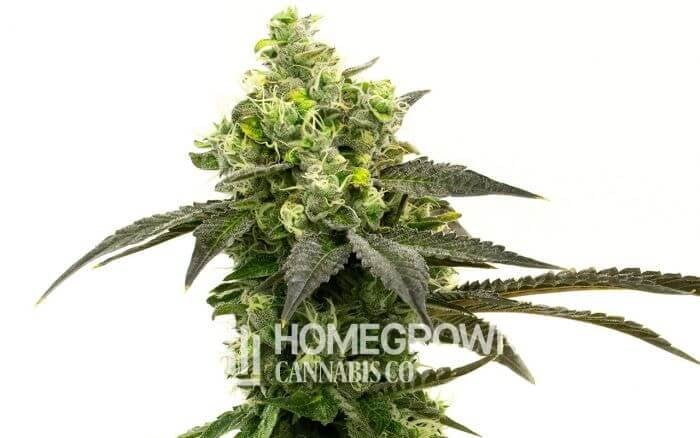
Northern Lights
There’s no need to brave the cold arctic to witness the Aurora Borealis when you can feel it in your mind. Northern Lights feminized is an indica dominant strain that’s probably the first high-grade cannabis most consumers encounter. Why? It’s easy to grow and delivers a potent, soothing effect that melts your muscles and diffuses tension. Immerse yourself in the moment and detach from the outside world for a blissful starry night.
Northern Lights gooey buds have a delicious, sweet, and fruity flavor. It grows to a moderate height of just 3–5 ft, great for a small reservoir and space in most weed hydroponics systems. Expect massive indoor yields of up to 18 oz./m2 after an incredibly short 6–8 week flowering period.
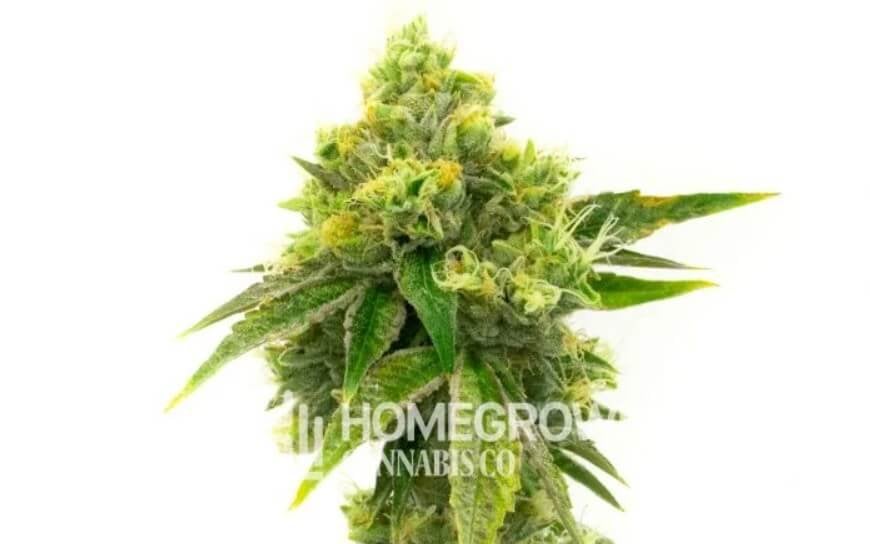
White Widow
The White Widow Feminized is a popular high-grade hybrid that stimulates creative and focused thinking during an outing. White Widow is so named because her buds are smothered in a thick sugar glaze when she flowers. A top pick for hash makers.
White Widow produces impressive yields of up to 16 oz./m2 in an indoor hydroponic marijuana setup. She grows steadily and finishes blooming in just 8 to 9 weeks.
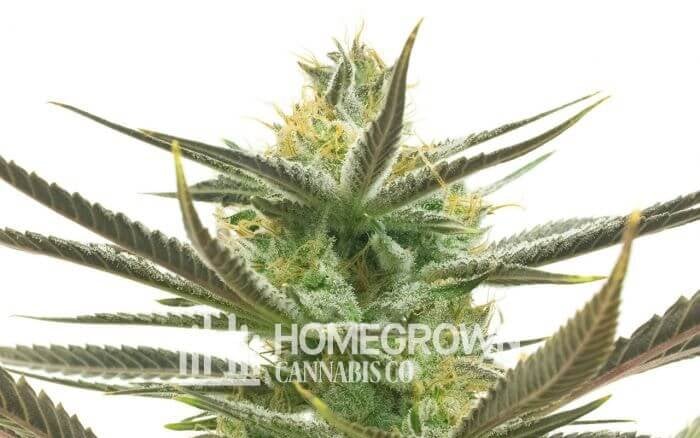
Skunk
Skunk feminized is another classic marijuana strain that's a huge favorite among commercial cultivators. It’s easy to propagate, grows to medium size, and produces massive yields of up to 16 oz./m2 in an indoor hydro weed setting. This multi Cannabis Cup award winner finishes flowering in just 8–10 weeks.
Everyone loves its fruity taste and powerful stress dissolving effects that brighten up your soul. Demanding veteran consumers love Skunks’ gripping effects.

That hydro’s got my eyes low
You’ll never want to go back to soil once you grow hydroponic weed. Choose a system based on your budget and level of experience. Start with a beginner-friendly concept like DWC before venturing to more complex setups.
Monitor your nutrient solution (pH and PPM), temperature, humidity, ensure adequate air circulation and pick the right light for each stage. It might seem difficult to manage these variables, but it becomes easier with experience.
We also have perfectly balanced nutrient solutions tailored to hydro weed plants during each growth stage, in addition to an astronomical collection of premium marijuana seeds. Don't miss out on either.
For even more advanced cultivation techniques, keep visiting our blog; there’s always something new being added.
About the author: Parker Curtis
Parker Curtis has around a decade of cannabis-growing experience, specialising in soil-less and hydro grows. He’s mastering outdoor, greenhouse, and indoor grows.
